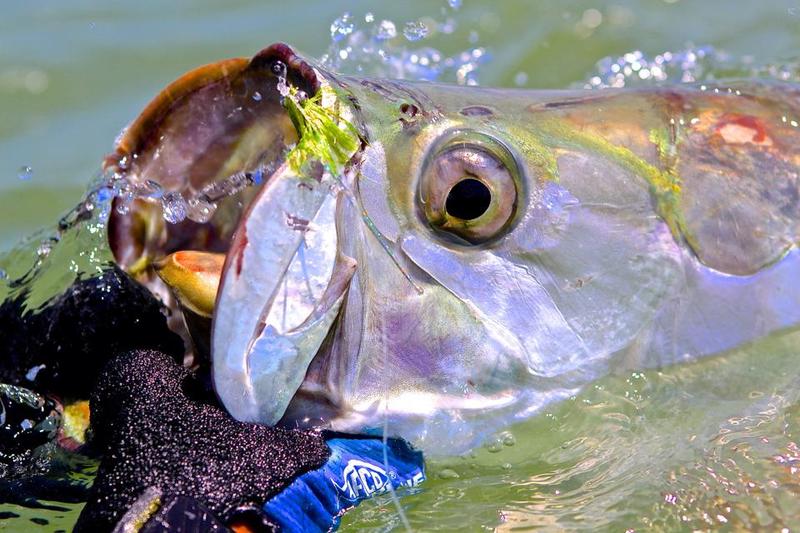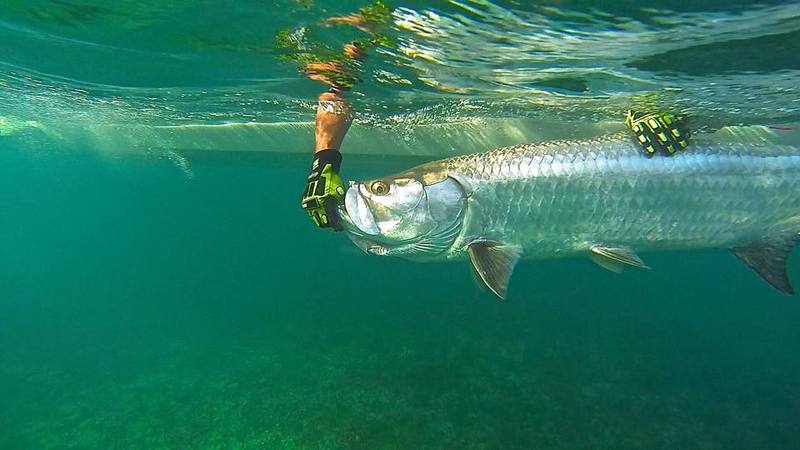Since Silver Kings saw fit to give us a rerun this past week I thought I would add a little something to the thread for any posters who just can't get tarpon off the brain.
Several years ago I was called to visit someone who knewthat I'd been bit by the tarpon bug. He asked me to come visit and when I did he handed me a book and told me to take it and read it. He wanted the book back, but he wanted me to read about the history and heritage of chasing the world's greatest gamefish. So I set out to read the 100 year old text (not my copy, but the prose) and after a few pages I couldn't put it down. If you've ever wanted to take a ride in a time machine and see what things were like before man messed it up - let me introduce you to
"THE BOOK OF THE TARPON"
A.W. Dimock was bornin the Northeast in 1842. He was college educated and a very successful businessman. At the prime of his career Mr. Dimock left N.Y. and travelled west. He began writing about his travels that included the western mountains and Native Americans, but he also travelled extensively in Florida. He fished and worked his way down the Gulf side of Florida where he became aquainted with the
great Silver Kings. He wrote several articles about the fish and places he fished, including: Punta Gorda, Marco Island, and the Everglades. While there he caught tarpon on hand lines, conventional tackle, fly tackle, and cane poles. He travelled by steamboat, skiff, canoe, and carriage. He camped on beaches, stayed on riverboats, and dined in local hotels. He fished the surf, rivers, bays, and passes. His canoe was swamped by a tarpon, he was pulled out to sea by a tarpon, and he had tarpon free-jump into the boat. His travels and fishing escapades were collected in
TheBook of the Tarpon, published in 1911.
The book is filled with illustrations and photographs. IIRC one or two of the chapters were written
by his wife who travelled with him on occasion. He gives detail on fishing technique, the flora and fauna of Florida, and bemoans the 'commercialization' and 'civilization' of the region (IN 1911!!!!).
Hopefully someone will look up a copy enjoy it as much as I did.
http://archive.org/details/bookoftarpon00dimorich

The Book of the Tarpon
quote:
CHAPTER I
THE FIRST TARPON
A GORGEOUS vision burst from the
water behind us and shot ten feet into
the air. "What on earth is that, Tat?"
I was trolling for channel-bass, but was catch-
ing cavally and ravailla, or jack-fish and snook,
as Tat persisted in calling them. I knew the
whole breed of jumping fish, with their slick,
greasy leaps and an occasional wiggle while in
the air, but the best of them was as Satyr to
Hyperion compared with the iridescent creature
at the end of my line. That twisting, gyrating
body, garmented in glistening silver and en-
veloped in a cloud of sparkling diamonds, was
unlike any denizen of earth. The brilliant rays
of the semi-tropical sun made a prism of every
drop in the shower that surrounded the creature.
At first I thought the wonderful being was a
mermaid, and as I noted her fierce display of ac-
tivity and strength, I pitied the merman who
came home late, without a better excuse than a
meeting of the lodge. Then I suspected it was
a wicked genie, freed from the seal of King
Solomon which had imprisoned it for thousands
of years.
I was brought back to earth by Tat's reply:
"Mus' be a tarpum!"
"What's that?" I asked.
"That's what's got your hook!"
Talking in a circle is profitless and I turned
to my buzzing reel, shouting as I saw the di-
minishing line: "Pull like smoke, Tat! Line's
'most gone."
Then I put on the drag, but it had no effect.
I held my rod vertically, and pressed my thimib
hard on the reel.
Once more the creature shot high in air, while
my thumb got red hot.
This was in February, 1882, three years be-
fore the recognition of the tarpon as a game
fish. I believe the tarpon then on my line was
entitled to the credit of being the first of his
species captured with rod and reel. That he
failed to receive recognition and that I missed
the glory of his capture is due to my unskilful
handling of the gaff after the contest was over.
The combat began at the mouth of the Ho-
mosassa River, in Florida, where its current
sweeps past Shell Island into the Gulf of Mex-
ico.
Illustrations from the book. These are taken and credited to the author's son, Julian Dimock.



Author A.W. Dimock Swimming with a manatee-

Darn formatting. 5 edits, think I got most of it.



















